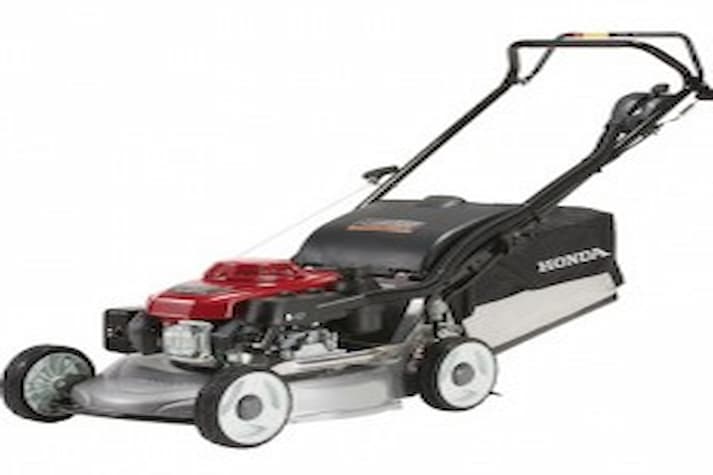4 Ways to Repair Push Lawn Mower Carburetor
29 November 2023
 Have you ever experienced difficulty starting your push lawn mower? It may be due to a damaged component, one of which is the carburetor. So, how to fix the lawn mower carburetor? Before setting it, you need to know the causes or symptoms first.
Have you ever experienced difficulty starting your push lawn mower? It may be due to a damaged component, one of which is the carburetor. So, how to fix the lawn mower carburetor? Before setting it, you need to know the causes or symptoms first.
After knowing the symptoms correctly, you can have your lawn mower serviced at the nearest Honda workshop. Later, you will clean the carburetor and replace some other carburetor components if damaged.
One of the obstacles that often occurs in lawn mower carburetors is a flooded carburetor, which makes it challenging to start the lawn mower. In addition, leaks in the carburetor usually happen because the carburetor parts have been damaged.
Damage to the lawn mower must be repaired so that it does not spread to other components. However, before fixing it, you need to know what symptoms appear in a damaged carburetor to repair it correctly. Find out various symptoms below.
Symptoms of Push Lawn Mower Carburetor Problems
When the lawn mower is challenging to start, the first component you should check is the carburetor. The function of the carburetor is to supply fuel to the combustion chamber. If this component has problems, you cannot use your lawn mower. So what issues usually occur in lawnmowers? Let's find out more about the symptoms below.
1. Flooded Carburetor
A flooded carburetor in a lawn mower is characterized by the release of fuel from the front of the carburetor or fuel entering the combustion chamber. The cause of this problem is that the carburetor needle clogs with dirt. It could also be because the carburetor needle has worn out.
The lawn mower carburetor also has a float component that could install incorrectly. As a result, it makes it difficult to start the lawn mower. So, you cannot use it when you need it.
2. Leaking Carburetor
Fuel drops at the bottom of the carburetor characterize a lawn mower carburetor leaking. One of the causes of this problem is the damaged carburetor packing. Therefore, it is essential for Honda users to always check this component so that the lawn mower is always in optimal condition.
3. Unstable Engine Speed
Another symptom of lawn mower carburetor problems is varying engine speed. The cause could be because the components in the carburetor clog with dirt (pilot jet, main jet, main nozzle, and ventilation hole).
Read Also: Causes of Lawn Mower Not Starting
How to Fix a Troubled Lawn Mower Carburetor
After you know the causes and signs of problematic lawnmowers, Honda users can better understand how to fix the lawn mower engine. You can also set this lawn mower engine more quickly and easily. Here's how to fix it.
1. Clean the Carburetor
One of the most effective ways to fix a problematic lawn mower carburetor is cleaning it. You can use a specialized carburetor cleaner or flush it with a solvent like benzene or acetone to clean out any dirt and carbon clogging the carburetor passages.
Ensure to flush the solvent in the opposite direction to clean out any debris that may trap inside. Here are the steps you can take to clean the carburetor.
-
Open the carburetor cover and remove the air filter.
-
Remove the spring, rod, and gas lever from the carburetor.
-
Remove the fuel hose.
-
Remove the carburetor bolt to dismantle the carburetor's inner parts.
-
Remove the float pin to remove the float and carburetor needle.
-
Check the float needle. If it is worn out, you can replace it with a new one.
-
Use a brush and gasoline to clean the inside of the carburetor. Also, clean the spray nozzle until the hole is free from dirt. Afterward, blow it with compressed air for a more thorough cleaning.
-
After everything is clean and dry, reassemble the components correctly. Ensure nothing is upside down or misplaced.
-
Reinstall the spring, rod, and carburetor gas lever. Ensure that all bolts are tight and secure.
-
Reinstall the air filter.
2. Reset the Carburetor
After cleaning the carburetor, you need to reset it to ensure the right amount of air and fuel enters the engine. You can do this by adjusting the fuel and air settings.
You should finish it with the resetting process at the nearest Honda workshop. It is best to have it done by an experienced mechanic to avoid other problems that may arise due to improper resetting of the carburetor.
3. Check Other Components
In addition to cleaning and resetting the carburetor, you also need to check other components that may be causing problems. For example, you need to inspect the fuel and airlines. There may be dirt clogging these two components.
If you find a problem with other components, you should replace them immediately to ensure optimal machine performance. You can replace these components at the nearest Honda workshop in your city.
4. Perform Routine Maintenance
Honda users must perform routine lawn mower maintenance to keep it in optimal condition. You can find out what care needs to be done in the guide provided by Honda.
After that, you can take the lawn mower to the nearest Honda workshop for routine maintenance. At least, you can service it once a month to ensure the lawn mower is always in optimal condition and ready for use when needed.
It is essential for Honda users to know and understand how to repair a lawn mower carburetor. Therefore, when you experience the signs of a troubled carburetor, you can fix it immediately or take it to the nearest Honda workshop.
Please do not force the lawn mower to work when it is in this condition, as it may cause it to shut down and become unusable. Instead, always perform routine maintenance at the Honda workshop to keep the lawn mower in optimal condition.
Read Also: 4 Causes of Powerless Lawnmowers and The Solutions
This method of repairing a carburetor applies to both push and riding lawn mowers from Honda. Do you need a reliable lawn mower with good performance? Find the best and most reliable lawn mower to suit your needs only at Honda Power Products!

Honda Power Products Indonesia
Honda Power Products menyediakan mesin serbaguna, generator, pemotong rumput, pemotong sikat, pompa air, dan mesin tempel.
